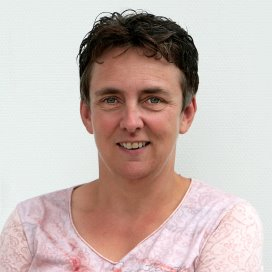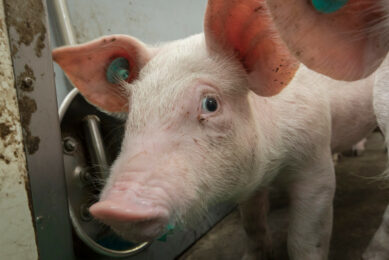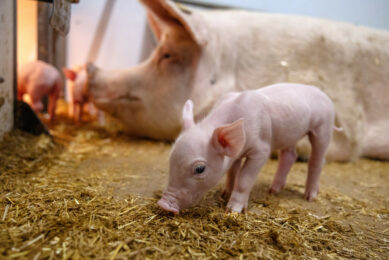Farm visit: Customising a new farrowing house in Germany
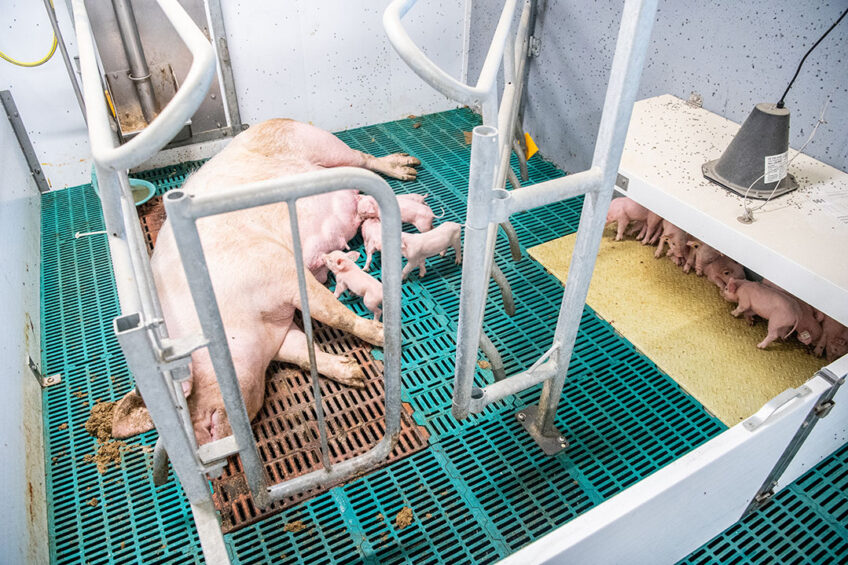
The swine industry in Germany is in transition, now that free farrowing will become the norm by law. Sow farmer Klaudia Arnemann, from Sendenhorst in the state North Rhine-Westphalia, designed her own free-range farrowing barn.
Upon entering the 2-year-old free-range farrowing barn, several things immediately stand out. It is remarkably light due to the many windows in the central alley and each of the barn’s sections. In addition, the barn is crisp – not only in terms of temperature, but also in terms of air quality. Klaudia Arnemann emphasises that while the temperature depends on what’s happening outside, she strives to keep the section under 20°C. “About 18°C is optimal for the sows. We can keep it warm for the piglets in their nest.”
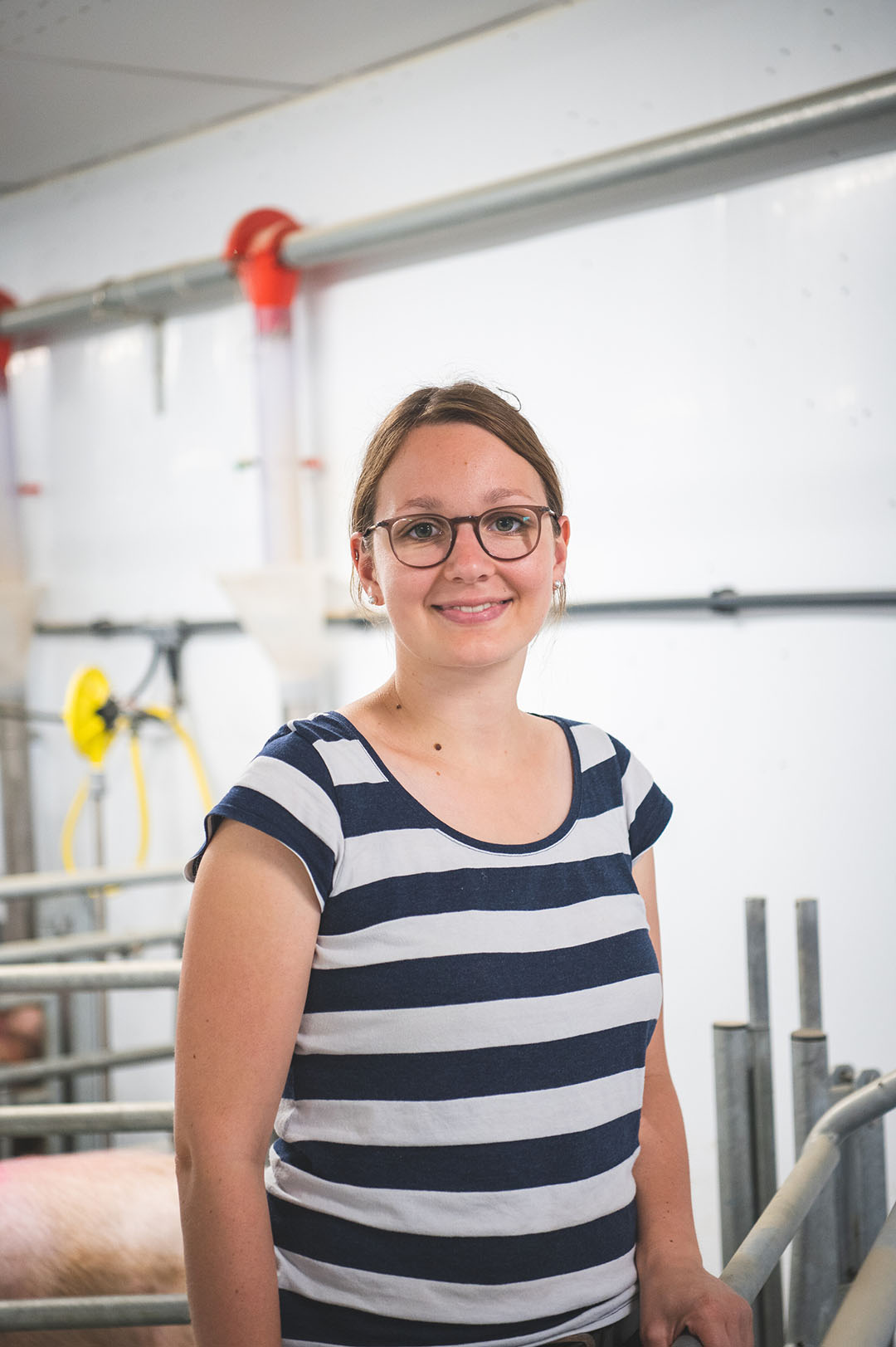
To keep the free-range farrowing barn cool on hot days, the air inlet is equipped with a spraying system. The contrast with the old section is significant; there, it is a lot warmer and the air is heavier. The cast iron area where the sow can lie down also contributes to a more comfortable temperature. Plastic slats retain the heat emitted by the sow.
Customised farrowing pens in free-range farrowing barn
The farrowing sections in the old barn need to be replaced, so in 2020 a new barn was built which already houses two-thirds of all farrowing pens. In 2021, Germany made it a legal requirement that sows can only be kept restrained in farrowing pens for five days, with producers having 15 years to comply. Anticipating the change in legislation, Arnemann looked at the options for free-range farrowing pens. She had quite the wish list: the farrowing pens must be able to be opened quickly and safely, the piglet nest must be clearly visible, observation and assistance at birth must be easy, the fencing must be quiet, and of course the farrowing pens must meet the legal minimum of 6.5 m2.

She presented this wish list to pig house contractor En-Sta, with whom she developed her own farrowing pens. The movable crate doors can be opened quickly with a lever and move easily without any rattling. “It just has to be as simple as possible, but safe as well,” Arnemann says.
Sows normally enter the farrowing pen five days prior to farrowing and are constrained up to two days before that. Between 2 and 5 days after farrowing, Arnemann moves the crate doors again. “It depends on the number of piglets, how well they can get around in the piglet nest and how well they drink. With every sow I look for the best moment to set her loose.” According to Arnemann, the costs for the free-range farrowing pens were about € 500 higher than for traditional farrowing pens. The costs are not so much in the material, but in the larger total surface of the barn.

Placement of feeder still a focus point
In the farrowing section, the sows face the wall because of the feeder, but in practice they face the aisle as soon as the crate doors are moved so they can keep an eye on things. This overview ensures that the sows hardly look up or back when visitors enter the barn. They transfer this peace and quiet to their piglets. There is no claw clattering of piglets sprinting away when someone enters the barn.
According to Arnemann, the placement of the feeder is still a focus point. Because the sows prefer to lie the other way around, they sometimes defecate in the feeders. That means more frequent checks, especially because Arnemann practices ad lib feeding. The sows also sometimes defecate in the drinking trough next to the feeder.
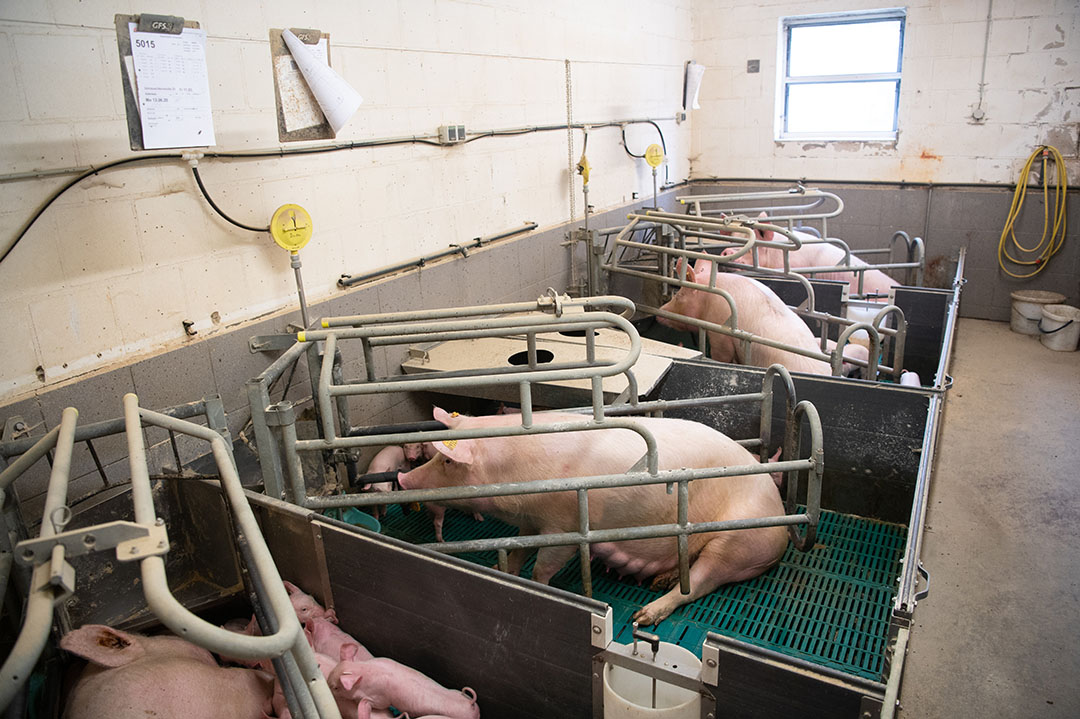
Learning to drink water in a playful way
The drinking trough is mounted a few centimetres above the floor so that piglets can drink together with the sow. The piglets stick their noses in the water just a few days after birth. By the time they are weaned, they drink together with their mother. After weaning, the piglets initially still receive water from a bowl.
The weaned piglets playfully discover the drinking nipples in their pens and drink from them in no time. Arnemann experiences few problems with that transition. Additional feeding is done in the farrowing pen with a separate feeding bowl. Because the piglets are weaned after four weeks, they weigh 7–8 kg at weaning, with a maximum of up to 10 kg.
Optimal piglet nest
For controllability purposes, the piglet nest is placed on the alley side and offers an unobstructed view from back to front through the section. To help the piglets find their way after birth, Arnemann works with partitions. The nests are equipped with underfloor heating with adjustable temperature. After a few days, the temperature gradually decreases. The underfloor heating is heated with hot water from the neighbour’s biogas plant, which is located a few hundred metres away. The roof with hanging edges ensures that the heat remains in the nest. The canopies are equipped with lamps, but according to Arnemann these are unnecessary: “The piglet nest heating is so good that we do not actually need the lamps.”
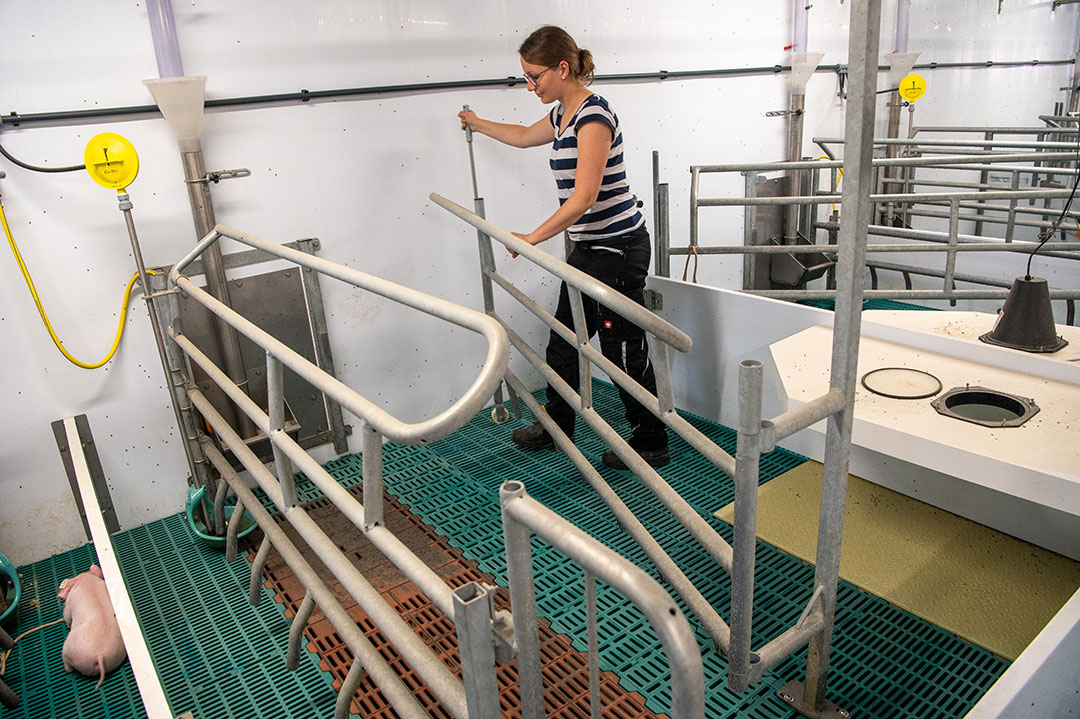
More spacious pens for large sows
If Arnemann must mention a downside of the farrowing pens, it is the surface. The legal standard of 6.5 m2 is good for most sows, but the Topigs sows appear to need more space: “The Topigs sows are a bit bigger than our PIC sows. This goes for all fifth litter and older sows as well. For those large animals, 7.5 m2 is better.”
Arnemann would like to set up a few pens on a larger surface in each section for the large sows. She is sure that the last sections in the old barn need to be converted, because the well-being and health of the sows is much better in the new barn.
The free-range farrowing pen is an improvement for the sows’ legs in particular: “Because they move more, they have fewer joint problems.”
Arnemann is happy with the conversion period set by the government. The German pig sector has been in a crisis for two years now with extremely low prices, making investments simply impossible. “And first, let’s see where our agricultural sector is heading. Here too, the government is talking about shrinking livestock farming. Without clarity, I cannot and do not want to invest in the last sections.”


